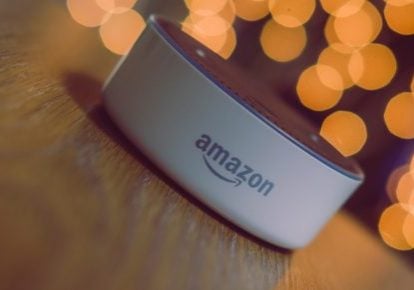
What’s the Difference Between Amazon Seller Central vs Vendor Central?
Julie Stewart

Today, we’re comparing Amazon Seller Central vs Vendor Central. If you’re currently selling on Amazon, you most likely started on Seller Central, which is the main entry point for all new vendors. Vendor Central is an invitation-only program, with greater perks but also more conditions and restrictions.
With Seller Central, you are classed as a third-party seller. There is a basic fee of $39.99/month to be in their “professional” plan. Sellers also pay fees for fulfillment items like transactions, shipping and storage.
One advantage to Seller Central vs Vendor Central is that you control the product listings with this option, including the descriptions and prices.
Seller Central puts this central merchandising decision in your hands: you can either stock and ship products yourself, or Amazon will do it for you through its Fulfillment by Amazon (FBA) service.
With FBA, you make bulk shipments of your products to Amazon, which in turn stores those products in its own warehouses. There’s a small storage fee, plus FBA transaction fees on every sale.
While opting out of FBA will save you on all the storage and transaction fees, your higher margins may be eaten up by slower sales. Given the choice, most customers generally prefer going with a product that has free two-day shipping rather than paying a shipping fee and waiting longer for their package to arrive. Thus, having the “Prime” badge on Amazon instantly helps you capture more sales from Prime shoppers who are comparing product choices.
Seller Fulfilled Prime is a way to gain Prime status even if you don’t use FBA.
Switching to SFP can help you sell more with access to all those Prime members who want free shipping. According to Amazon, seller fulfilled listings saw a 50% bump in sales following the switch.
To qualify, you must already be a Best Seller, and also submit to a trial period fulfilling Prime orders before you’re allowed to display the Prime badge.
In Vendor Central, you are becoming an official Amazon vendor in the regular Amazon storefront, with all the rights and privileges thereto. If you move a high volume of products, Amazon may invite you into Vendor Central.
As a vendor, you’ll be selling your products to Amazon, acting effectively like their distributor. Your products will enjoy actual Amazon listings, as opposed to the Marketplace’s less trustworthy bazaar of third-party sellers. The customer can’t tell the difference between yours and official “Amazon” products.
A+ content is those extended product details and descriptions used for Amazon store products. Either create A+ content yourself using targeted keywords and bullet points, or let Amazon do it for you.
The tradeoff for potentially higher product sales is that you’re giving up some control when it comes to pricing and your inventory. Amazon sets the price, not you. You can specify a minimum advertised price (MAP), but it isn’t guaranteed. Be prepared to get your inventory to Amazon quickly. Amazon may return any unsold merchandise.
Note that Amazon controls pricing because of its promise to match any other seller’s pricing of a specific barcode. So if a manufacturer in Vendor Central has its products being sold for a cheaper price than their own, Amazon will change the Vendor’s price to match, and there is no guarantee they will return the price back to the MAP price.
Here’s a table comparing the two programs:
If you receive an invitation from Amazon to Vendor Central, consider it like an invitation to join the country club: you’ll instantly attain higher status, but the costs can be high too. You’ll need to consider your business’s current situation and goals to make an intelligent choice.
When you make the jump to Amazon Vendor Central, you’re giving up a good deal of control in exchange for higher sales volumes. If you’re set up and capable of selling at that volume, great! Remember that, depending on what Amazon does to your prices, margins can be a lot smaller so figure out your pivot point and then decide.
Amazon Seller Central may not have all the status and privileges, but you’ll have more control over your business and be less subject to Amazon’s mercy. You’ll be able to set your own prices and resolve any customer service issues on your own. And, you can still qualify for the Prime program if you’re able to match Amazon’s performance standards.
Another factor to consider is payments. Seller Central has fast payments, so you don’t need to wait as long for your money after making a sale. With Vendor Central, it can take 60 to 90 days for payments. If cash flow is an issue for your business, consider that one with care.
As an Amazon Partner, Shoppingfeed can turbocharge your sales with our syndication services that include fluid tagging algorithms and selections from over 11 million unique product attributes for automatic listing into Amazon’s feed. We can also automate your order fulfillment and help you qualify for Seller Fulfilled Prime with error-free transactions.
Discover 6 Secrets to Amazon Success.
Uncertainty about changes in Amazon’s Vendor Central operations is the main reason why brands are ...
E-commerce business owners often struggle with the best ways to reach new customers. Getting your ...
In case you hadn’t noticed, Google is going all-in on capturing as much of the online retailing ...
Google Manufacturer Center (GMfC) is the company’s newest tool for Brands to gain tighter control ...